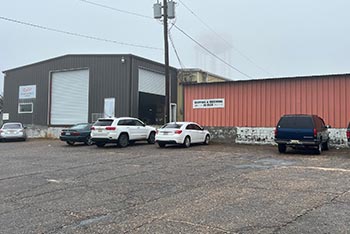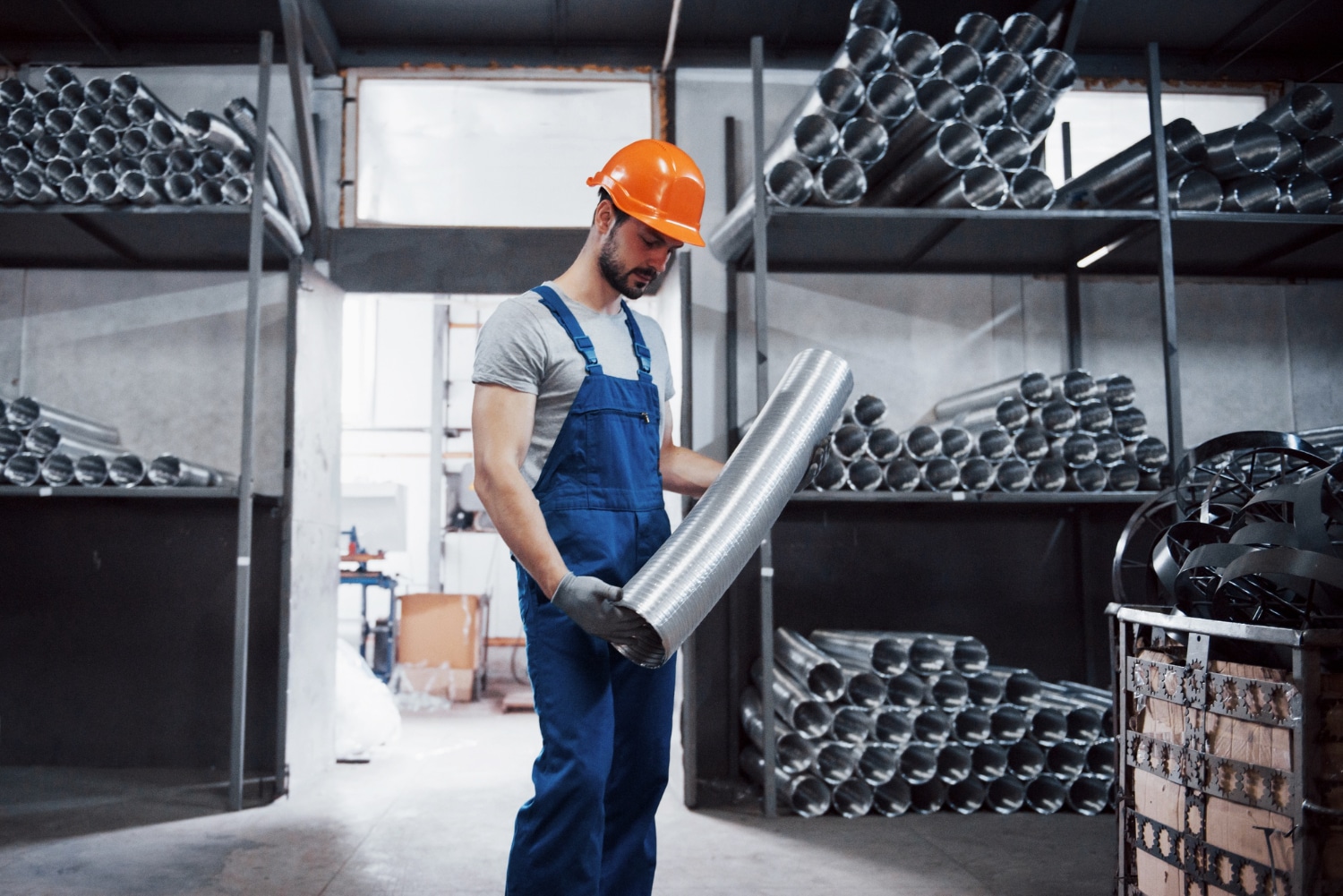The steel and metals industry plays a crucial role in shaping the manufacturing landscape, as it continually evolves to meet the growing demands of an increasingly competitive global market. Forward-thinking manufacturers must stay informed about the latest trends and adapt their processes and strategies accordingly to maintain a competitive edge. In this article, we’ll be unveiling the top 5 emerging trends that are revolutionizing the steel and metals industry, while also highlighting how manufacturers can embrace these changes to stay ahead of the curve.
First, we’ll delve into advanced metal processing techniques, such as microalloying and high-strength steel development, which promise greater efficiency and improved product properties. Next, we’ll discuss the growing push for sustainability in the steel industry and how manufacturers can adopt eco-friendly measures, like utilizing renewable energy sources and implementing waste reduction methods.
Join us as we uncover the latest developments poised to transform the steel and metals industry and reveal actionable tips on how your manufacturing business can leverage these trends to achieve greater success.
Advanced Metal Processing Techniques: Revolutionizing Manufacturing
In recent years, advanced metal processing techniques have emerged as game-changers in the steel and metals industry. Microalloying, for example, involves adding specific alloying elements (such as titanium, niobium, or vanadium) in small amounts to optimize the properties of steel. This results in a higher strength-to-weight ratio, allowing manufacturers to create lighter, more durable products while using less material.
Another noteworthy innovation in metal processing is the development of high-strength steels (HSS). These steel grades possess high tensile strengths and excellent formability, making them ideal for creating lightweight structures without sacrificing safety or performance.
Sustainability in the Steel and Metals Industry: The Green Wave
The push for sustainability in the steel and metals industry is becoming increasingly essential, both from a regulatory standpoint and to meet consumer demand for eco-conscious products. By addressing issues such as energy consumption, waste, and greenhouse gas emissions, manufacturers can improve their environmental footprint and gain a competitive edge in the market.
One key area of focus for sustainable manufacturing is the use of renewable energy sources. According to the International Renewable Energy Agency, renewable energy capacity in the global steel industry is projected to increase by over 70% between 2015 and 2030. Therefore, the adoption of solar, wind, and hydropower to power steel production facilities can significantly reduce greenhouse gas emissions while mitigating dependence on fossil fuels.
In addition to embracing green energy options, waste reduction methods like recycling and reuse initiatives are crucial in promoting sustainability. For instance, utilizing old steel scrap in new production can significantly lower energy consumption and CO2 emissions compared to producing steel from raw materials. By ensuring a robust recycling infrastructure and embracing circular economy principles, the industry demonstrates its commitment to reducing waste and conserving resources.
The Power of Technology: Optimizing the Metal Supply Chain
The integration of technology is revolutionizing supply chains and management processes within the steel and metals industry, resulting in cost savings, increased efficiency, and improved product quality. For example, machine learning algorithms can help manufacturers improve product quality by identifying defects and inefficiencies in the production process, enabling timely corrective actions.
Robotics also plays a key role in transforming the metals industry. By automating material handling, cutting, and welding operations, robots can improve efficiency, lower production costs, and reduce the risk of workplace accidents. Additionally, as robotics continue to evolve, the development of collaborative robots (or “cobots”) allows machines and human operators to work side by side, enhancing precision and overall manufacturing quality.
Lastly, blockchain technology has the potential to increase transparency, traceability, and security in the metals supply chain. By leveraging distributed ledger technology, manufacturers can securely track and verify material origins, minimize the risk of counterfeit products, and ensure ethical sourcing practices. Blockchain also helps facilitate collaboration among suppliers, manufacturers, and customers, fostering mutual trust and enhancing overall supply chain efficiency.
Digitalization also helps manufacturers streamline their design processes by utilizing advanced simulation tools and computer-aided design (CAD) software. This technology allows engineers to virtually prototype and test their products, ensuring optimal design criteria are met and reducing the need for costly physical prototypes.
Moving forward, staying informed about the latest developments in Industry 4.0 and digitalization is crucial for manufacturers looking to thrive in today’s competitive market. Our team of experts can provide valuable insights and resources to help your business navigate the ever-evolving landscape of the steel and metals industry.
Enhancing Safety through Advanced Monitoring and Automation Solutions
While productivity and efficiency are vital factors in the steel and metals industry, ensuring worker safety remains a top priority for manufacturers. By incorporating advanced monitoring and automation solutions, manufacturers identify and prevent potential hazards, ultimately protecting their workforce and reducing the risk of workplace accidents.
By automating repetitive and dangerous tasks using robotics or cobots, manufacturers can reduce human exposure to hazardous environments and prevent workplace injuries. By strategically deploying automated solutions, companies in the steel and metals industry can enhance both the safety and efficiency of their operations.
The Importance of Collaboration in the Steel and Metals Industry
As the steel and metals industry continues to evolve in response to emerging trends and technological advancements, fostering collaboration among stakeholders has become increasingly important. Companies can benefit significantly from partnering with suppliers, customers, research institutions, and governments, sharing knowledge and resources to accelerate innovation and drive mutual success.
By working together with stakeholders across the value chain, steel and metals companies can jointly address challenges such as sustainability, energy efficiency, and workforce development. Collaborative research and development projects can lead to breakthrough innovations in materials, processes, and technologies, ultimately benefiting the entire industry.
Additionally, nurturing close relationships with suppliers and customers can improve the efficiency and resilience of supply chains, enabling companies to better manage disturbances, such as market volatility or global crises.
By embracing a culture of collaboration, companies in the steel and metals industry can reap the benefits of combined knowledge and resources, accelerating innovation and driving long-term success.
In today’s rapidly evolving market, staying informed and adapting to the emerging trends in the steel and metals industry is crucial for maintaining a competitive edge. We’re equipped to help your manufacturing business navigate these challenges and uncover the opportunities that lie ahead, ensuring your continued success and growth in this dynamic sector.
Preserving Quality Assurance and Control Across the Supply Chain
As the demand for steel and metal products grows globally, maintaining impeccable quality assurance and control throughout the entire supply chain is crucial. By investing in advanced testing equipment and implementing stringent quality management systems, steel and metals manufacturers can ensure product consistency, minimize defects, and ultimately enhance customer satisfaction.
To achieve high-quality standards, companies can adopt recognized quality management frameworks such as ISO 9001. Achieving this certification demonstrates a company’s commitment to consistently meeting customer needs and regulatory requirements while continually improving its operational processes.
Moreover, manufacturers can use advanced techniques like statistical process control (SPC) to monitor and improve production processes by systematically analyzing data to identify trends and variability. With a data-driven approach, companies are better equipped to fine-tune their processes, optimize resource utilization, and efficiently address any issues that may arise during production.
Quality assurance and control also play a critical role in product traceability, particularly when it comes to raw material sourcing and supply chain sustainability. By implementing robust systems and leveraging technologies like blockchain, steel and metals companies can ensure transparency and traceability throughout their operations, reducing the risk of counterfeit material usage and maintaining ethical sourcing standards.
Financial Risk Management in the Steel and Metals Industry: Crucial Strategies for Success
In an increasingly competitive global market, effectively managing financial risks is essential for the long-term success of steel and metals companies. Proactive risk management strategies can help businesses navigate market volatility, safeguard against economic downturns, and ensure they are well-prepared to capitalize on new opportunities.
Another key aspect of risk management is having a diverse supply chain and customer base. By sourcing materials from local suppliers and engaging with a wide range of customers, businesses can reduce their vulnerability to disruptions, such as supply shortages or location-specific economic crises.
Embracing the Future of the Steel and Metals Industry
The steel and metals industry is undergoing significant changes driven by emerging technologies, evolving customer demands, and the need for greater sustainability and efficiency. To stay competitive and foster growth in this dynamic environment, manufacturers must proactively adapt to these trends and embrace new ways of operating by investing in advanced technologies, workforce development, and strategic collaborations.
By prioritizing innovation, ensuring quality assurance and control, exploring customization opportunities, and effectively managing financial risks, industry players can safeguard their positions as leaders in the global market. Furthermore, adopting a sustainability-focused mindset and embracing digital transformation are no longer just options but necessities for success in the ever-evolving steel and metals industry.
At Roller Die + Forming, we are committed to supporting your manufacturing business in navigating these challenges and seizing the opportunities available in today’s global market. With our metal fabricators’ extensive industry expertise and cutting-edge technologies at your disposal, let’s embark together on a journey to create a better, more sustainable future in the world of steel and metals manufacturing. Reach out to us today to get started.












